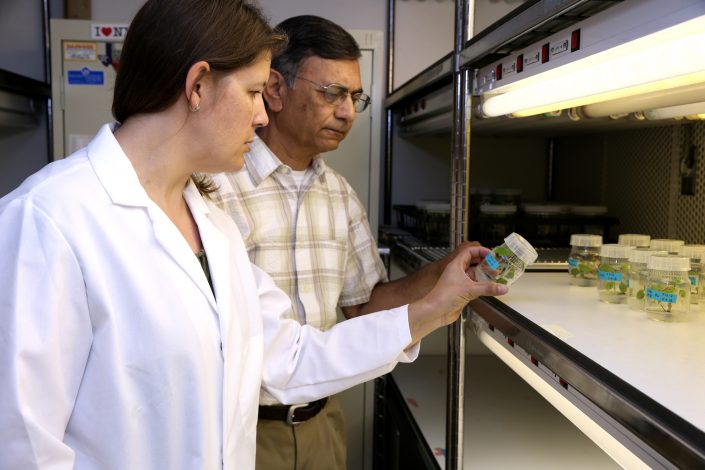One system tackles two concerns among U.S. cotton producers

Image: Texas A&M AgriLife
A newly developed fertilizer system will provide nutrition to engineered cotton crops worldwide and a deadly dose to weeds that are increasingly herbicide resistant, according to a newly published Texas A&M AgriLife Research study.
The new system applies phosphite to cotton crops engineered to express a certain gene — a gene that makes cotton able to process the phosphite into nutrition while the same compound suppresses weeds that are unable to use it, researchers said.
“Our researchers here at Texas A&M AgriLife have addressed an issue that costs producers billions of dollars,” said Patrick Stover, vice chancellor of agriculture and life sciences for The Texas A&M System and acting director for AgriLife Research. “This is an economical, environmentally safe and sustainable solution.”
Weed herbicide resistance and weed control are ranked second and third among concerns of U.S. cotton farmers, after input costs.
Stover said this is an exciting and timely discovery in the movement to get ahead of the ongoing problem of weeds evolving faster than the chemicals and other methods developed to control them.
“We believe the ptxD/phosphite system we have developed is one of the most promising technologies of recent times that can help solve many of the biotechnological, agricultural and environmental problems we encounter,” said Keerti Rathore, professor in the Department of Soil and Crop Sciences in Texas A&M University’s College of Agriculture and Life Sciences as well as an AgriLife Research plant biotechnologist.
The research was published the week of June 4 in the Proceedings of the National Academy of Sciences.
Phosphorus is a major element required by all living beings – life is not possible without it. Most organisms can only utilize phosphorus in the form of orthophosphate.
“We have determined ptxD-expressing cotton plants can utilize phosphite as a sole source of phosphorus while weeds cannot, thus making it effective at suppressing weed growth,” Rathore said.
The transgenic plants expressing the bacterial ptxD gene gain an ability to convert phosphite into orthophosphate, he said. Such plants allow for a selective fertilization scheme, based on phosphite as the sole source of phosphorous for the crop, while offering an effective alternative to suppress the growth of weeds that are unable to utilize this form of phosphorus.”
This research was funded in part by Cotton Inc. Weed herbicide resistance and weed control are the second and third concerns of U.S. cotton farmers after input costs.

